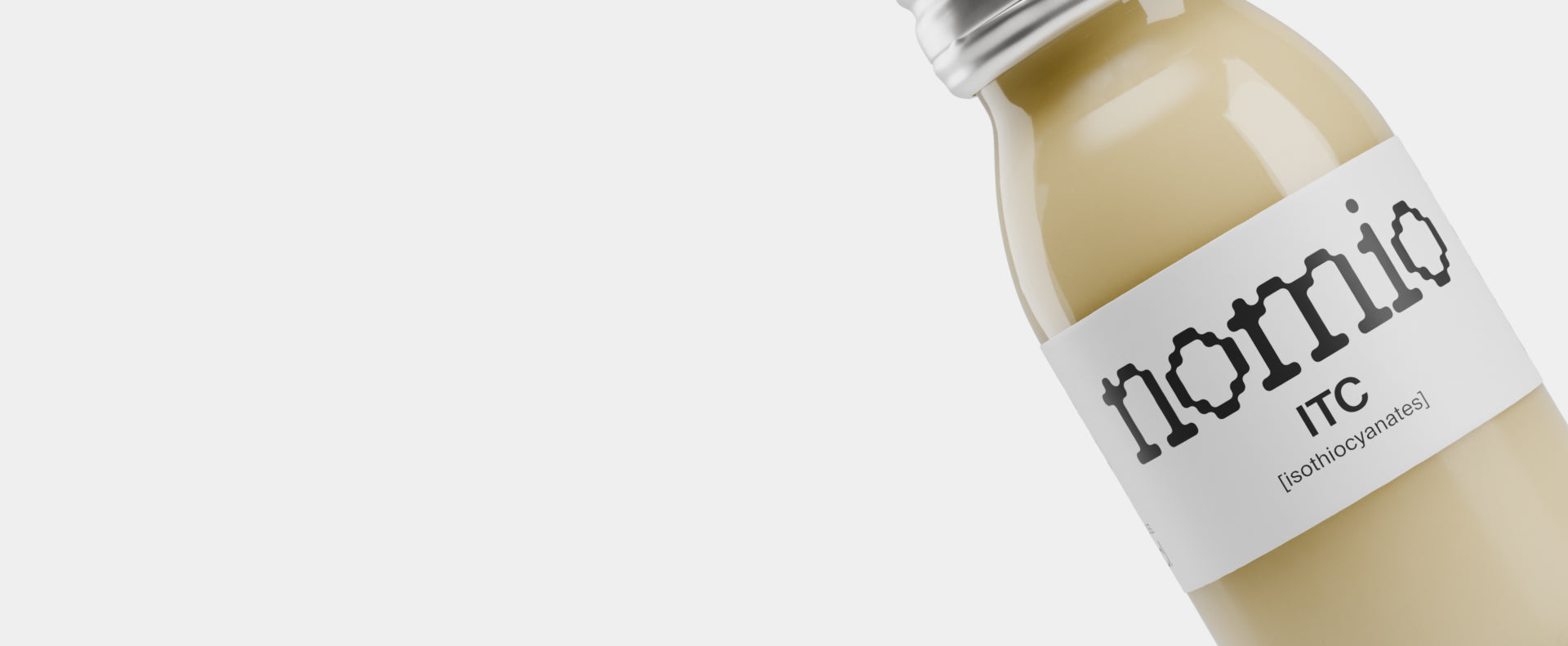Reduced lactate build-up during intense exercise
Clinical and in-vitro studies show significant improvements from utilizing ITC when training for endurance
Strengthened training signals creating more mitochondria
Accelerated post-exercise recovery
Get bundle discounts with every purchase
Over eight years of research at Karolinska Institutet (KI) and the Swedish School of Sport and Health (GIH), has resulted in successful stabilisation of isothiocyanates, enabling production of a potent performance drink.
The group of scientists behind the research on isothiocyanates (ITC) was originally established at Karolinska Institutet. In 2009, Filip Larsen joined as an M.Sc. student, contributing to Jon and Eddie’s groundbreaking research on Nitrate. Michaela Sundqvist joined the group as a PhD student in 2014. After several years of collaboration, Filip transitioned to the Swedish School of Sport and Health Sciences (GIH), where his research has focused on exercise adaptations and muscle physiology in elite athletes. At GIH, Filip initiated the research on ITC and exercise adaptations, with the first study published in 2023. Michaela joined his research group as a postdoctoral fellow in 2021 and led the most recent study on the acute effects of ITC intake.
ITC for Endurance Training

In a double-blinded cross-over study, the NRF2-activating properties of ITC was shown to lead to greater training adaptations - participants who took ITC saw faster training improvements compared to placebo.
Headline results also included a 12% reduction in blood lactate compared to placebo.
Published as a pre-print in 2025, investigated the acute effects of ITC. The study showed that a single dose of ITC significantly reduced blood lactate during sub-maximal exercise.
It was also found that the optimal ITC dose follows a U-shaped curve, with the most effective amount matching the ITC content in one Nomio shot.
In an independent study by David Hood of York University, muscle fibers were stimulated with electricity to emulate exercise, while being exposed to ITC.
Key discoveries included an increased biogenesis signal causing more mitochondria and better functioning in ITC-exposed muscles.
Reduced lactate build-up during intense exercise
Strengthened training signals creating more mitochondria
Accelerated post-exercise recovery
A previously well-researched interaction was the activation of the NRF2-system in the body - a regulator of antioxidative enzymes produced in the body.
The isothiocyanates present in glucosinolate-rich broccoli sprouts show indications of reducing lactate by 12% on average in early studies.
In a double-blinded cross-over study, the NRF2-activating properties of ITC was shown to lead to greater training adaptations.
The study showed that a single dose of ITC significantly reduced blood lactate during sub-maximal exercise, confirming previous research.

Sulforaphane & Exercise Protect Against Alcohol-Related Liver Damage
Sulforaphane Reduces Liver Injury from Intense Exercise
Chronic Sulforaphane Use Reduces Inflammation After Resistance Training
Sulforaphane Supplement Eases Muscle Soreness Post-Exercise
NRF2 Activation Boosts Exercise Endurance via Muscle Redox Modulation
Sulforaphane Protects Muscles from Exercise-Induced Damage
Sulforaphane Prevents Age-Related Muscle Decline via NRF2
Broccoli Sprouts Help Detox Benzene Exposure in Humans
Broccoli Sprout Extracts Studied in Recurrent Prostate Cancer
Optimal dose of ITC in a convenient 60ml package.
Same day performance improvement.

Nomio has a best-before date 8 months after production if stored refrigerated. However, they last up to 8 weeks in room temperature, making it easy to bring it to trainings or travel it.
Nomio's research team consists of many of the scientists who found the benefits of Nitrate in training. With research conducted for over 8 years at Karolinska Institute and Swedish School of Sports Science, there are robust data underlining the effects of Nomio. Read more under "Our Science".
The active components in Nomio are ITCs - isothiocyanates. Isothiocyanates activate a system called NRF2, a known regulator of physical stress in the body. By activating NRF2 before a workout, your body is better prepared for handling the physical stress involved. This produces many of the positive outcomes from using Nomio, for example lowered lactate levels and faster training adaptations.
Nomio is both a training product and a performance product. By using Nomio during your key sessions for extended periods of time, our research has shown that you will get faster training adaptations, meaning that you will improve quicker than you would otherwise. It allows you to push harder during sessions, and also recover faster, which also adds to the compounding improvements. In addition, Nomio improves your ability to perform during competitions or races, by reducing lactate build-up and oxidative stress during the race, allowing you to go faster than you would otherwise.
Nomio is shown to be highly beneficial to athletes of almost all levels. There seems to be an even stronger effect than average in elite athletes, and a less strong effect in those who rarely or never work out. Nomio's research is conducted on a mixed set of participants, ranging from sub-elite to recreational endurance athletes.